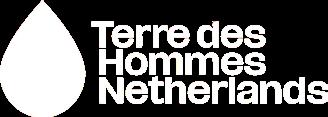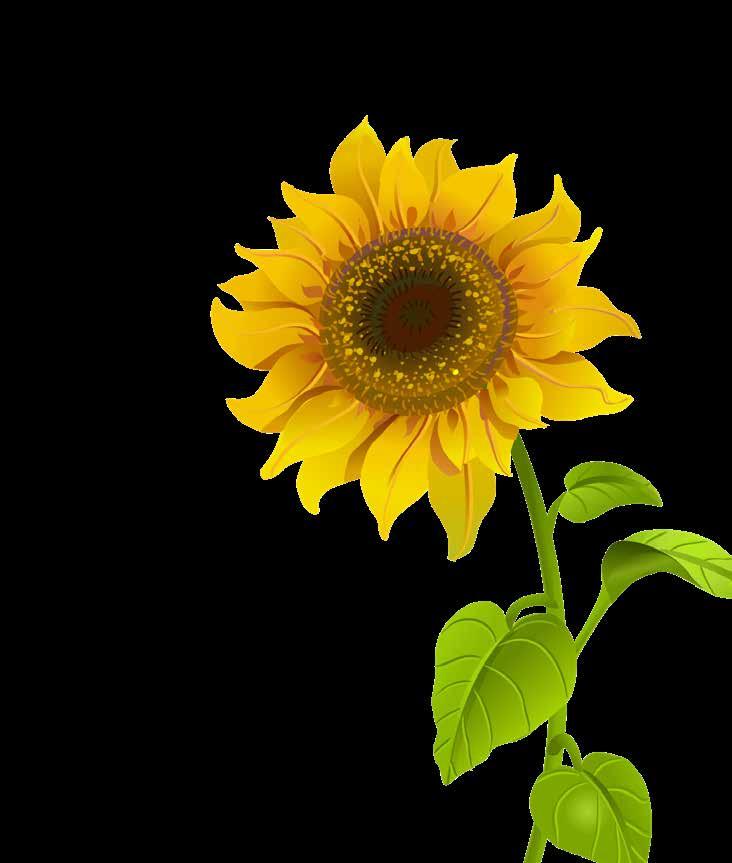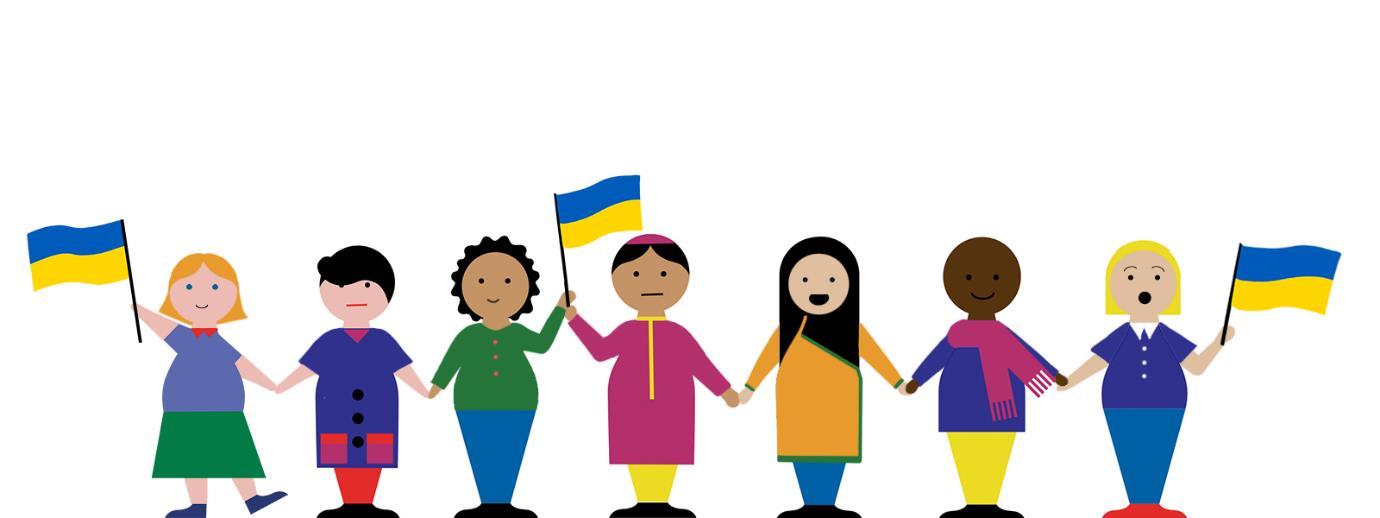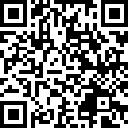



INTRODUCTION AND METHODOLOGY
Since the beginning of the war in Ukraine, more than 14 million Ukrainian refugees have crossed borders seeking safety. Child helplines all across Europe have expanded their services to cater to the needs of these individuals, offering Ukrainian-speaking counselling services. Child Helpline International, along with our child helpline members in Ukraine (La Strada), Poland (FDDS), Hungary (Kék Vonal), Slovakia (Linka Detskej Istoty), and Romania (Asociația Telefonul Copilului) have been responding to the war though our Children’s Voices Ukraine project. Now in its third phase, and in partnership with Terre des Hommes Netherlands, the project aims to maintain and improve the child helpline services for Ukrainian children and young people affected by the war. One of the main objectives of the project is to amplify children and young people’s voices by generating evidence of their contacts to child helplines in Ukraine and its surrounding countries.
In early phases of the project, we discovered that, despite the availability of services in host countries, many Ukrainian children and young people were not utilizing these resources1 . This gap in service usage prompted the Children’s Voices Ukraine project to investigate the barriers preventing children from utilizing the services and addressing their needs more effectively. Country Reports, summarising country-specific research and surveys, as well as an overarching Community Report were made available earlier this year2 .
1 Child Helpline International (2023). Voices of Children & Young People Affected by the War in Ukraine: Monthly Contacts with Child Helplines in the Region
2 https://childhelplineinternational.org/addressing-the-needs-of-ukrainian-child-refugees/
Every child has a voice. We believe that no child should be left unheard. childhelplineinternational.org
Throughout this phase of the project, we collected data from these five members, on the contacts they received in each quarter from children and young people, regarding various issues related to the war. These issues could range from anxiety about the war spreading (mental health), to bullying in school (violence), and accessing the local education system (access to services), to name a few.
The case of La Strada, the child helpline in Ukraine, is unique since, naturally, it does not have a separate service for children affected by the war. Therefore, we provide information on their contacts separately from that of the other members.
The collected data is intended to amplify the voices of children and young people affected by the war, to guide policymaking and practice, and to generate a reliable and objective image of help-seeking behaviour.
FINDINGS
All counselling contacts
The participating child helplines (outside Ukraine) operate the Ukrainian-speaking service in addition to the usual services they provide to the local children and young people. We asked how many counselling contacts they provided overall in the project’s time period. The child helpline in Romania is unable to provide data by quarter, so their data is not included in the analysis (nor does La Strada’s, see above).
We found that the other three members provided 205,997 counselling sessions in the 12month duration of the data collection. 112,112 of them concerned girls (54.4%), 85,212 boys (41.4%), 215 nonbinary children and young people (0.1%), and 8,458 to children and young people whose gender is unknown (4.1%).
The Slovakian child helpline provided 114,235 counselling sessions, the Polish 54,032, and the Hungarian 37,730.
War-related counselling contacts
At the same time, the four members in the countries surrounding Ukraine received 7,359 counselling contacts from children and young people about the war. These contacts could be from or about Ukrainian children and young people residing in the country, or from local children and young people affected by the war. The current volume of contacts to the Ukrainian-speaking service represents 1%-11% of the overall counselling contacts received by the helpline (depending on the country).
Every child has a voice. We believe that no child should be left unheard.
childhelplineinternational.org
WHO
3,751 of the contacts were from or about girls (51%), 2,005 from or about boys (27%), and 1,603 (22%) were from or about children whose gender is unknown.
More than two-thirds of the contacts whose age is known come from children aged 13-17 (4,481 contacts, 68%). 19% are from or about children aged 7-12, and another 10% from young people aged 18-24. A small number of contact concerns children under 7 (2%).
Unknown 0-6 7-12 13-17 18-24
HOW WHERE
98% of contacts came by phone and only 2% by chat or other written communication forms
Most of these contacts were reported by the child helpline in Poland, with a total of 5,721 contacts. The other three –Romania, Hungary, and Slovakia –had about 500-600 contacts each.
Every child has a voice. We believe that no child should be left unheard. childhelplineinternational.org
WHY
The most common reason for contacting a child helpline supporting children and young people who are refugees from Ukraine was Mental health, accounting for 91% of contacts. 6% of contacts were violence-related (including physical and psychological violence, neglect, bullying), and another 55 contacts (3%) to the Polish child helpline were related to Sexual exploitation. No contacts related to Child labour were reported by the members in the countries surrounding Ukraine.
WHEN
The number of contacts per quarter fluctuated over the course of the year. While in Slovakia the contacts have consistently been dropping over time, in Poland and in Romania they have increased from Q4 of 2023 to Q1 of 2024, and then increased again in Q2, but dropping in Q3. In Hungary, after an initial drop, contacts have been higher in Q3 of 2024 compared with end of 2023.
La Strada Ukraine
The Ukrainian child helpline is unique in this analysis, since nearly all counselling contacts made to it are arguably related to the war. War puts children and young people at greater risk of violence and damages their mental and physical health. It affects their relationships with family and friends and deteriorates their education. For this reason, we analyse data from La Strada separately from data from the other members in the area.
In the duration of the project, La Strada Ukraine provided 164,865 counselling sessions, 161,864 reportedly war-related (98%)3 .
WHO
Two-thirds of them were from or about girls (69%) and a third were from or about boys (31%). 291 contacts, less than 1%, were from or about children and young people who identify as nonbinary.
Like the other child helplines in the area, and consistent with data CHI has from child helplines all over the world – children aged 13-17 are the most frequent users of child helplines. 51% of contacts to La Strada over the last year came from that age group. 27% are from or about 18-24-yearolds, and 21% are from or about 7-12-year-olds. Only 1% of contacts related to children under 7.
HOW
56% of the contacts to La Strada came via phone and 44% from various online means of written communication.
3 Non-war-related contacts can be about fighting with one’s friend, or getting over the death of one’s dear cat, or asking for advice on birth control.
Every child has a voice. We believe that no child should be left unheard. childhelplineinternational.org
WHY
The most common reason for children and young people to contact La Strada was Mental health, accounting for two-thirds of the war-related counselling sessions (37,720 contacts, 63%). The second most common reason was Violence, with 21,695 contacts which are 36%. 250 contacts were received involving Child labour, and 28 about Sexual exploitation (<1%).
WHEN
The number of contacts per quarter fluctuated slightly over the course of the year, with the least contacts coming in the first quarter of 2024 (34,852 contacts) and the most in the following quarter (45,908). Note, that attacks on the Ukrainian communications and electricity infrastructures affected the technical possibility of contacting the child helpline throughout the war.
CASE SUMMARIES
We asked the members to share case summaries of war-related contacts they’ve received in the duration of the project. The child helpline in Poland is restricted from sharing such information with external partners and the child helpline in Romania was unable to share due to workload, so only cases of other members are provided below.
Mental health (Slovakia)
A distressed boy called after watching a Czech film, Waves, which depicted scenes of tanks and aggression during the 1960s in Prague. The film stirred intense emotions of anger, sadness, and anxiety, particularly as it resonated with his experiences as a Ukrainian refugee. He struggled with the portrayal of censorship, oppression, and violence, and felt upset and unable to breathe properly. The counsellor actively listened to the boy, allowing him to vent his emotions. Together, they explored ways to process the intense feelings brought up by the film. Suggestions included engaging in physical activities like walking or going to the gym to release frustration and considering a session with the school psychologist to address these emotions in-depth. The boy expressed relief after venting his feelings and planned to focus on his homework. He acknowledged the importance of processing his emotions, though he recognized it would take time to move past the impact of the film.
Peer relationships (Slovakia)
A girl called with concerns about two topics: improving her academic performance and clarifying the uncertain status of her romantic relationship. She felt overwhelmed by the pressure to excel in school and conflicted about her connection with a boy who hadn’t contacted her for over a week. The counsellor discussed her stress and perfectionist tendencies, emphasizing that it’s normal to feel such emotions. Practical strategies, such as managing her goals and practicing breathing techniques, were introduced to help her handle anxiety. Regarding her relationship, the counsellor encouraged her to postpone major decisions until her school workload lightened, framing the delay as a way to prioritize her well-being. The girl left the conversation with a better understanding of her emotional state and practical tools to manage stress.
Peer relationships (Hungary)
Aleksandra, an 18-year-old Ukrainian girl living in Budapest, called to share her heartbreak. She confessed her love to a colleague who rejected her feelings, expressing only platonic affection. Aleksandra is struggling with loneliness and isolation, as she has no friends in Budapest – all her loved ones live in Ukraine. Aleksandra’s unrequited love exacerbated her feelings of sadness and disrupted her sleep.
Mental health (Ukraine)
A 16-year-old girl called during a massive rocket attack while home alone. She experienced a severe panic attack, unable to calm herself or seek safety in the bomb shelter. The
Every child has a voice. We believe that no child should be left unheard. childhelplineinternational.org
counsellor guided her through calming techniques, including breathing exercises ("Balloon") and grounding exercises ("5-4-3-2-1"). The girl regained her composure, thanked the counsellor and ran to the bomb shelter.
Violence (Ukraine)
A 10-year-old boy reported prolonged exposure to domestic violence, where his father frequently fights with his mother at night. Although he wanted to call the police, the boy hesitated, fearing the reaction of neighbours and the visibility of police-car's lights which would violate the rules of camouflage at night. The counsellor focused on reassuring the boy and prioritizing his safety. Together, they developed a plan on how the boy could act in a situation of repeated domestic violence. The boy felt calmer and more confident about seeking help. He thanked the counsellor for their support and left the call calm and collected.
Violence (Ukraine)
A mother reported potential sexual abuse of her 3-year-old daughter while under the care of a neighbour. After conflicting medical examinations and insufficient action by the police, the mother sought the guidance of the child helpline on protecting her child. The counsellor supported the child's mother, reassured her, and provided detailed legal advice - what legal steps the mother should take quickly to protect her child.
Family relationships (Ukraine)
A mother contacted the child helpline about ongoing conflicts with her ex-husband, which frequently involved their child. Her animosity toward the father led her to involve the child in disputes, creating emotional strain and behavioural issues. The counsellor helped the mother reflect on her behaviour and its impact on her child. They discussed ways to separate her role as a parent from her grievances as an ex-spouse, emphasizing the importance of shielding the child from adult conflicts. The mother acknowledged the harm her actions had caused to her relationship with her child.
Sexual exploitation (Ukraine)
A 13-year-old boy contacted to the National Toll-Free Hot Line for Children and Youth about his 12-year-old friend's problem. At first, the boy was very shy and hesitated about how to start a conversation with the counsellor. But after the counsellor assured him that all telephone consultations are provided on the principle of anonymity and confidentiality, the boy dared to talk about his friend's problem.
The caller reported that his friend had been communicating online with an adult man for about six months. At first, it was just communication, but then this man began to send his 12-year-old friend intimate photos and asked the child to do the same. At first, the caller's friend was afraid to send intimate photos, but when the man offered him money for the photos, the boy agreed. Now their communication is still ongoing. The boy, for money,
8 Every child has a voice. We believe that no child should be left unheard. childhelplineinternational.org
sends the adult man his intimate photos and videos, and also makes video calls with him. The caller doesn't know what is happening on the video calls, but he is sure that something is definitely illegal. The boy really wants to help his friend, but doesn't know how.
The counsellor thanked the boy for daring to share such a difficult situation and said that he is really a good friend, because he doesn't turn away from his friend's problems. The counsellor informed the boy that the adult man's actions are indeed illegal and criminally punishable, and it is very important to stop this situation, because it is both physically and emotionally traumatic for a 12-year-old child.
Since the counsellor didn't have personal information about the victim boy to contact the police, they, together with the caller, began to look for other alternatives for help. As a result of the consultation, it was decided that the boy would report his friend's situation to an adult whom the boy trusts, so that in the future, with the help of an adult, the victim boy could be protected. At the end of the conversation, the caller was much calmer and more confident in how he would help his friend, and thanked the counsellor for his advice and support.
Child labour (Ukraine)
A woman contacted the child helpline, reporting that she had been seeing two children (a boy and a girl) begging in an underpass near one of the metro stations for about two weeks. The children appeared to be 7-8 years old. The woman reported that the children told her that their parents were drunk and that they had nothing to eat. That is why they ask adults for money and spent it on food. The woman is very worried about how to help the children.
The counsellor thanked the woman for not remaining indifferent to the children's situation. The counsellor provided the woman with an action plan to assist the children, which the woman could perform on her own or with the help of the helpline. As a result of the conversation, the counsellor collected all the necessary information about the children in order to promptly refer it to the police and the children's service, so that the children could be helped.
At the end of the conversation, the caller thanked the counsellor and said that now she felt calmer and more confident that the children would be provided with all the necessary assistance and protection. The woman also thanked the work of the child helpline.
Every child has a voice. We believe that no child should be left unheard. childhelplineinternational.org
CONCLUSION
The findings of this report highlight the significant role child helplines play in addressing the needs of children and young people affected by the war in Ukraine, both within Ukraine and in surrounding countries.
The majority of contacts to the child helplines are from children aged 13–17, with girls constituting a higher percentage of callers. These findings are consistent across most helplines and underline the importance of focusing on adolescents' needs. Mental health concerns dominate the reasons for contact, indicating the psychological toll of the war on young people.
Poland’s helpline reported the highest number of war-related contacts, suggesting differences in service reach, refugee distribution, or awareness across countries. This disparity highlights the need for localized approaches to improving outreach and service delivery.
While helplines have successfully supported thousands of children, the low proportion of Ukrainian-speaking service usage relative to overall capacity raises concerns about accessibility, awareness, and trust in these services. Many children and young people, particularly those integrated into local communities, might not be fully aware of or willing to use the local child helpline resources.
RECOMMENDATIONS
With closing in on two years from the start of the war, priorities are shifting. This is true for the funding landscape as well as for the needs of the refugees themselves, integrating in the local communities and establishing themselves. We have conducted separate research on the topic of the needs of these young refugees and how to best reach them to make them aware of the services of child helplines, and it can be found here.
Our key recommendations, considering findings from both activities:
1. Enhance awareness and access to child helplines, to ensure all children and young people, including Ukrainian refugees, are informed of its services and functionality. Specific potential barriers preventing children from utilizing child helpline services, such as stigma, lack of trust, or limited digital access, should be addressed and dismantled. Partners, governments and those working with Ukrainian refugees should collaborate with child helplines to find the best solutions in their countries.
2. Adapt services for the evolving needs of refugee children, young people and their families: The support offered should transition from a focus solely on emergency mental health support to services that also address integration challenges, longterm education access, and community building.
3. Funding for child helplines' programs for refugee children, young people and families must be maintained. Funding for services supporting refugees is diminishing, while their needs are not. Child helplines are a low-threshold, freely
Every child has a voice. We believe that no child should be left unheard.
childhelplineinternational.org
accessible, and child-friendly entry point into the child protection system. As such, child helplines should be resourced and expanded to provide support and guidance to all those in need of it.
4. Explore and pilot routing of contacts between child helplines to relieve pressure on La Strada Ukraine and strengthen responses. Services in neighbouring countries have capacity to take on more contacts from Ukrainian children and young people, whereas La Strada is facing immense pressure, and the emotional and mental strain on its counsellors is considerable. Therefore, it would be beneficial to explore and pilot options of routing of contacts between child helplines.
By addressing these areas, child helplines can continue to play a pivotal role in supporting Ukrainian children and young people affected by the war, fostering resilience, and aiding integration into their host communities.



Published by Child Helpline International January 2025
Child Helpline International is a collective impact organization with more than 150 members in over 130 countries and territories around the world. We coordinate information, viewpoints, knowledge and data from our child helpline members, partners and external sources. This exceptional resource is used to help and support child protection systems globally, regionally and nationally, and to help our members advocate for the rights of children and amplify their voices.
Child Helpline International Bruggebouw Suite 5.08
Bos en Lommerplein 280 1055 RW Amsterdam
The Netherlands

